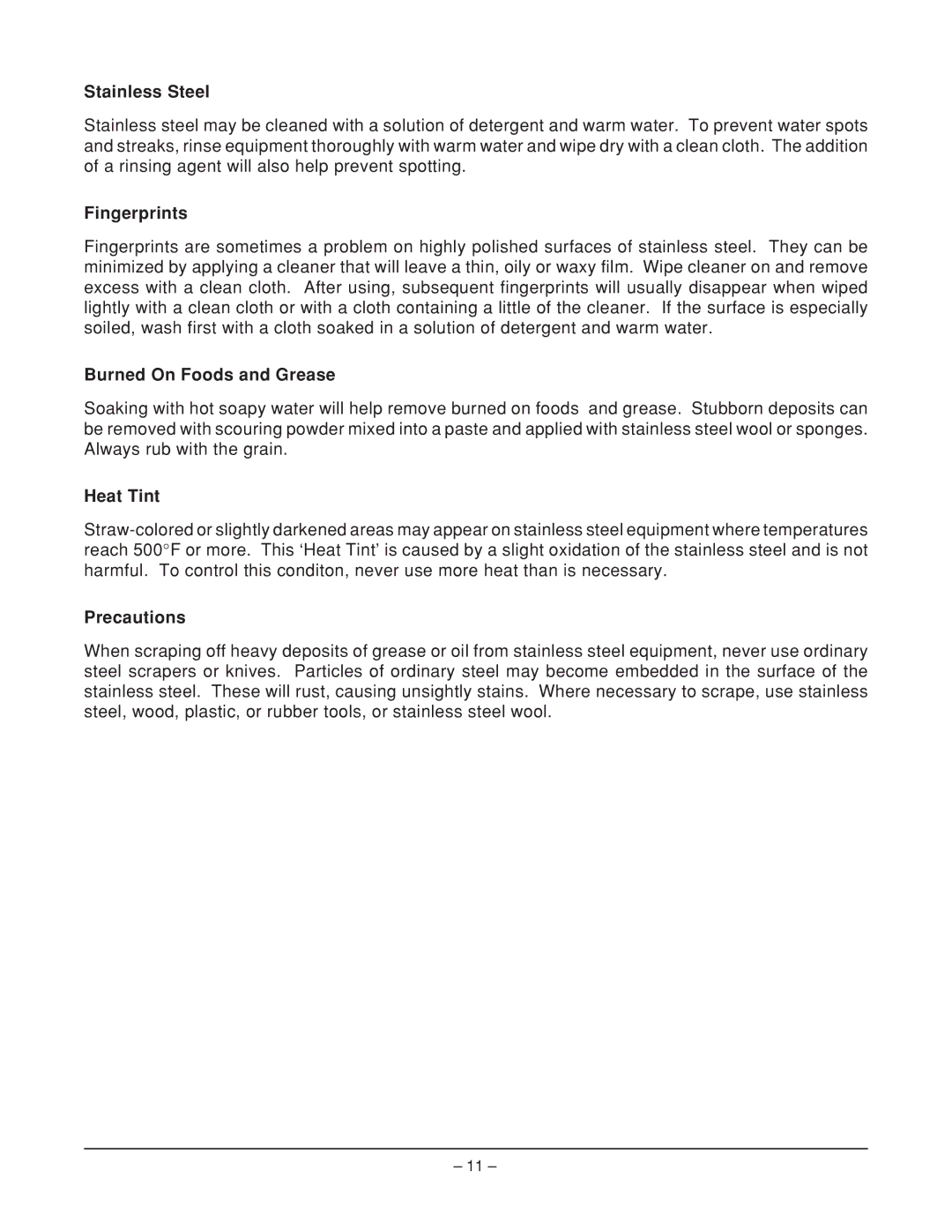Stainless Steel
Stainless steel may be cleaned with a solution of detergent and warm water. To prevent water spots and streaks, rinse equipment thoroughly with warm water and wipe dry with a clean cloth. The addition of a rinsing agent will also help prevent spotting.
Fingerprints
Fingerprints are sometimes a problem on highly polished surfaces of stainless steel. They can be minimized by applying a cleaner that will leave a thin, oily or waxy film. Wipe cleaner on and remove excess with a clean cloth. After using, subsequent fingerprints will usually disappear when wiped lightly with a clean cloth or with a cloth containing a little of the cleaner. If the surface is especially soiled, wash first with a cloth soaked in a solution of detergent and warm water.
Burned On Foods and Grease
Soaking with hot soapy water will help remove burned on foods and grease. Stubborn deposits can be removed with scouring powder mixed into a paste and applied with stainless steel wool or sponges. Always rub with the grain.
Heat Tint
Precautions
When scraping off heavy deposits of grease or oil from stainless steel equipment, never use ordinary steel scrapers or knives. Particles of ordinary steel may become embedded in the surface of the stainless steel. These will rust, causing unsightly stains. Where necessary to scrape, use stainless steel, wood, plastic, or rubber tools, or stainless steel wool.
– 11 –
